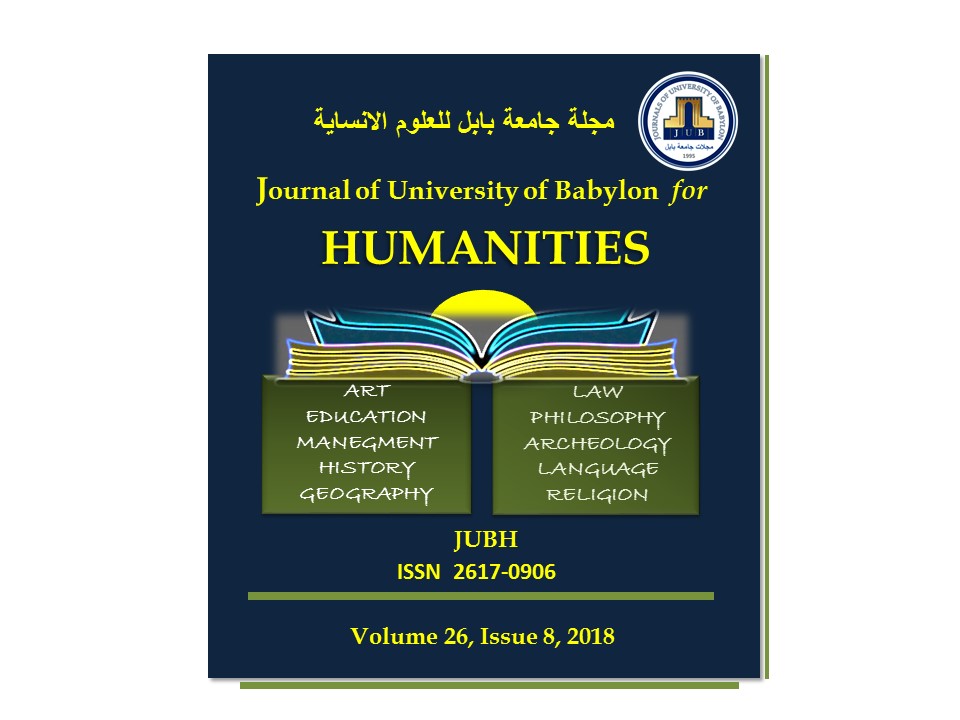أُسُسُ عدّ الفرق والمذاهب الإسلامية وتصنيفها عند مشاهير أهل المقالات حتى نهاية القرن السادس الهجري
محتوى المقالة الرئيسي
الملخص
يعد موضوع الفرق والمذاهب الإسلامية من الموضوعات المهمة والمثيرة للجدل بسبب حساسيته في المجتمع الإسلامي والتأثر والتعصب المذهبي لدى أكثر المصنفين الذي خاضوا غمار هذا الجانب من التراث الإسلامي مما أّدّى إلى تكوين فكرة جامدة في هذا الإطار وموقف معادٍ لمن يخالفهم في العقيدة والمذهب، وقد اخترنا عنوان:(أسس عد الفرق والمذاهب الإسلامية وتصنيفها عند أصحاب المقالات حتى نهاية القرن السابع الهجري). وقصدنا بأصحاب المقالات الذين كتبوا في موضوع الفرق والمذاهب الإسلامية؛ وذلك من أجل الوقوف على الأسس التي اعتمدها هؤلاء الكُتَّاب في عدّ الفرق والمذاهب الإسلامية وتصنيفها ومعرفة مدى واقعيتها. فوجدنا أنفسنا أمام مادة سردية مكررة يتداولها أكثر المؤلفين جيلاً بعد جيل من دون تحليل وتمحيص ومن دون أنْ يقدموا جديداً فيها ولا سيما ما يخص عدد الفرق والمذاهب في الإسلام وتصنيفها مستندين في هذا إلى فهمهم وتفسيرهم للحديث المروي عن النبي محمد (h) في افتراق الأمة إلى ثلاثة وسبعين فرقة أو لدفاعهم عن مذاهبهم التي ينتمون إليها. محاولين جاهدين أنْ يرسموا في مخيلة المسلمين أنّ فرقتهم التي ينتسبون إليها هي الناجية وأنّ أتباع الفرق الأُخر على ظلالة وفي النار.
وقد استرسل من كتب في هذا الموضوع بقدر استطاعته في تكثير الفرق والمذاهب والانحياز بشكل أو بآخر إلى الفرقة التي ينتمي إليها في عقيدته ومذهبه، لذلك وجدنا من الضروري معرفة وفهم الأسس التي بنى عليها المؤلفون قوانينهم في عد الفرق والمذاهب في الإسلام وتصنيفها، فمن غير المنطقي قراءة الفرق الواردة في هذه الكتب قراءة سردية دون معرفة خلفيات ذلك؛ لأنّ هذا الموضوعات يعد من المواضيع المهمة في ماضي المسلمين وحاضرهم ومستقبلهم.
وقد اعتمدنا على طريقة جمع المادة من مصادرها الأولية واستنطاقها وتحليلها تحليلاً علميَّا موضوعيَّا للوصول إلى الحقيقة. وقد بني البحث على مقدمة وثلاثة مباحث وخاتمة ثم قائمة بالمصادر والمراجع.
تناولنا في المبحث الأول الأسس التي اعتمدها أشهر مؤلفي القرنين الثالث والرابع الهجريين في عد الفرق والمذاهب الإسلامية وتصنيفها، وتناولنا في المبحث الثاني الأسس التي اعتمدها أشهر مؤلفي القرنين الخامس والسادس الهجريين في عد الفرق والمذاهب الإسلامية وتصنيفها، أما المبحث الثالث فقد خصصناه للبحث في الأسس التي اعتمدها أشهر مؤلفي القرن السابع الهجري في عد الفرق والمذاهب الإسلامية وتصنيفها. وقد اخترنا هذه المدة الزمنية؛ لأنَّ المادة العلمية التي كتبها أشهر الكتاب في هذا المجال تعد الأساس الذي اعتمد عليه من جاء بعدهم وبنوا عليها بنيانهم في بيان الفرق والمذاهب الإسلامية. ثم جاءت خاتمة البحث لتحمل أهم النتائج التي توصلنا إليها، تبعها قائمة بالمصادر والمراجع التي رفدت البحث.

